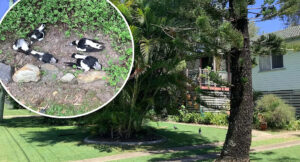
NASA has announced the selection of three scientific instruments destined for the Moon, with two slated for integration onto the Lunar Terrain Vehicle (LTV) and one earmarked for a future orbital mission. This decision marks a significant step in NASA’s Artemis program, which aims to explore the lunar surface with the first crew-driven vehicle to operate on the Moon in over half a century.
The LTV, designed to accommodate up to two astronauts and capable of remote operation, is central to NASA’s objective of extending scientific exploration across the Moon’s diverse landscapes. “The Artemis Lunar Terrain Vehicle will transport humanity farther than ever before across the lunar frontier on an epic journey of scientific exploration and discovery,” stated Nicky Fox, associate administrator of the Science Mission Directorate at NASA Headquarters in Washington.
Advanced Instruments to Unveil Lunar Secrets
The selected instruments promise to enhance our understanding of the Moon’s composition and resources. The Artemis Infrared Reflectance and Emission Spectrometer (AIRES) will play a pivotal role in identifying and mapping lunar minerals and volatiles, such as water and ammonia. By capturing spectral data over visible light images, AIRES will provide insights into the distribution of these materials, particularly in the Moon’s south polar region. Phil Christensen from Arizona State University leads the AIRES instrument team.
Meanwhile, the Lunar Microwave Active-Passive Spectrometer (L-MAPS) will delve beneath the lunar surface to uncover potential ice deposits. Equipped with both a spectrometer and ground-penetrating radar, L-MAPS will measure subsurface temperature, density, and structures down to 131 feet (40 meters). Matthew Siegler from the University of Hawaii at Manoa heads the L-MAPS team.
“Together, these three scientific instruments will make significant progress in answering key questions about what minerals and volatiles are present on and under the surface of the Moon,” said Joel Kearns, deputy associate administrator for Exploration, Science Mission Directorate at NASA Headquarters.
Orbital Opportunities and Future Exploration
In addition to the LTV instruments, NASA has selected the Ultra-Compact Imaging Spectrometer for the Moon (UCIS-Moon) for future orbital deployment. This instrument will complement the LTV’s findings by mapping the Moon’s geology and volatiles from above, offering a broader context for the discoveries made on the surface. Abigail Fraeman from NASA’s Jet Propulsion Laboratory leads the UCIS-Moon team.
The UCIS-Moon will provide the highest spatial resolution data on lunar surface water, mineral composition, and thermophysical properties. Its wide-view images will guide astronauts in selecting valuable lunar samples, enhancing the scientific yield of future missions.
Strategic Partnerships and Future Missions
NASA’s collaboration with commercial lunar rover vendors—Intuitive Machines, Lunar Outpost, and Venturi Astrolab—has been instrumental in advancing the LTV project. Preliminary design reviews have confirmed that each vendor’s rover meets NASA’s system requirements. A decision on the demonstration mission is expected by the end of 2025.
The Artemis program represents a broader vision for lunar exploration, addressing high-priority science questions and laying the groundwork for human missions to Mars. By integrating human and robotic exploration, NASA aims to unlock the Moon’s secrets while preparing for future interplanetary journeys.
As the Artemis missions progress, they promise not only scientific discovery but also economic benefits and the potential to establish a sustainable human presence on the Moon. The instruments selected for the LTV and future orbital missions are poised to play a crucial role in this ambitious endeavor.





